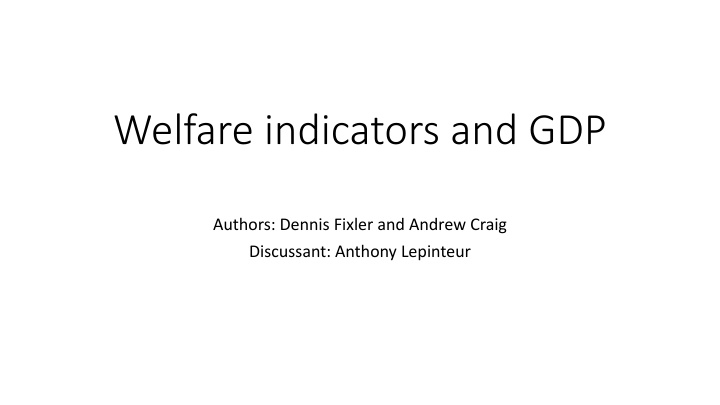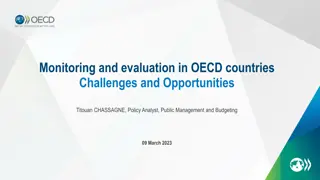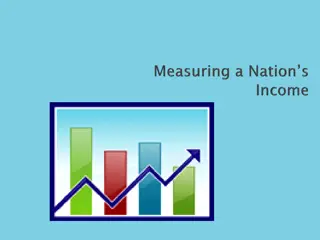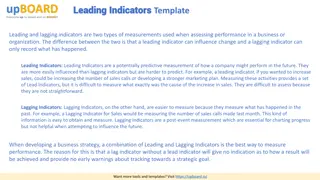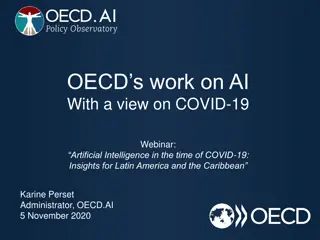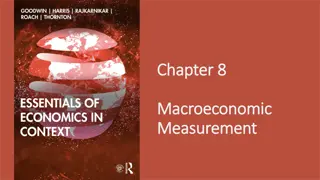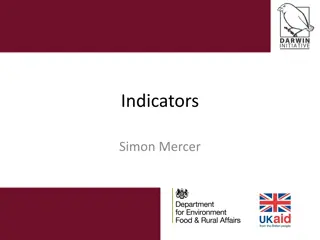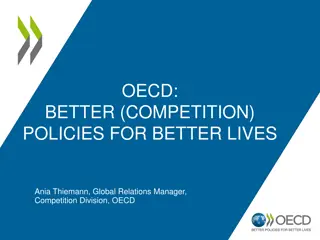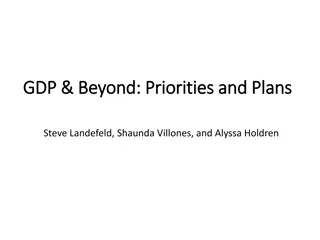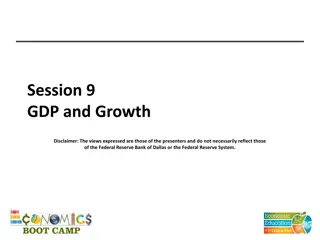Welfare Indicators and GDP Relationship: Insights from OECD Data
This paper examines the relationship between welfare indicators and GDP, highlighting the limitations of GDP in measuring overall economic performance. Through OECD data analysis, it explores how income-based measures can still be informative about well-being, offering insights for policymakers on directing attention towards economic growth.
Download Presentation

Please find below an Image/Link to download the presentation.
The content on the website is provided AS IS for your information and personal use only. It may not be sold, licensed, or shared on other websites without obtaining consent from the author.If you encounter any issues during the download, it is possible that the publisher has removed the file from their server.
You are allowed to download the files provided on this website for personal or commercial use, subject to the condition that they are used lawfully. All files are the property of their respective owners.
The content on the website is provided AS IS for your information and personal use only. It may not be sold, licensed, or shared on other websites without obtaining consent from the author.
E N D
Presentation Transcript
Welfare indicators and GDP Authors: Dennis Fixler and Andrew Craig Discussant: Anthony Lepinteur
Motivation Motivation Growing support for well-being (WB) indicators: Why? GDP is insufficient to measure economy s overall performance and GDP even bring negative outcomes such as collapse of financial market and rise in inequality (Stiglitz et al., 2009) The well-being indicators of this paper: OECD How s Life Initiative: a set of well-being indicators based on admin data, official statistics and SWB statistics
Motivation Motivation However, GDP measures (income-based measures more generally) may still: be informative about well-being (...) and this paper examines the relationship between a set of OECD well-being indicators and household income (pages 1 and 2) Why could they still be informative/useful? GDP production and consumption fundamental components of WB Past literature used correlation/regressions analyses Automatically assume linearity of relationship between income and WB Rationale inattention: multidimensional approach may be challenging when policy-makers have limited attention, and GDP may be a sufficiently good proxy
The paper in a nutshell The paper in a nutshell Aggregate data on WB and income: Various sources: OECD, Gallup, EU-SILC, Time Use Surveys Up to 40 OECD countries From 2006 to 2017 Method: Indicators of dependence from the family of Mutual Information Classic Pearson correlation coefficient Conclusion: a rehabilitation of income-based measures as indicator of WB? Page 12: We have shown that there are instances where the entropy measures suggest a greater dependency than does the correlation coefficient Page 13: Knowing that income provides information about many well-being indicators allows policymakers to rationally direct their attention to economic growth.
Data Data
Data Data
Method Method Mutual Information (MI): Page 2: measure of dependence (...) that reveals how much information is shared between two variables, or how much information is gained about one variable by looking at the other Page 5: MI is grounded in the entropy of the variables, where entropy means the uncertainty of the variable measured in bits of information Why MI? MI = complement to standard correlation/regression analysis Particularly useful in case of non-linearity Less affected by outliers? (not mentioned in the paper)
Method Method
Method Method If you re not familiar with this approach (like myself), here is a simple ChatGPT- generated example with two random variables X and Y:
Method Method To ease the interpretation and comparisons with standard Pearson correlation coefficient use of Information Quality Ratio (IQR) Equal to zero no overlap Equal to one perfect overlap
Results Results Panel (pooled?) Panel (pooled?)
Results Results Panel Panel
Results Results Time Time- -Series Series Comparisons of the different metrics over years But metrics are not directly comparable So normalization:
Results Results Time Time- -Series Series
Results Results Time Time- -Series Series
Results Results Time Time- -Series Series
Conclusions Conclusions HH income provides information about various dimensions of WB Hence, income-based measures (e.g. GNI per capita, GDP) can be viewed as indicator of WB Income-based measures may be more useful than multidimensional indices because it solves issues linked to rational inattention
Some comments: Some comments: About the manuscript: The Introduction would benefit from having a clearer discussion of the objectives, results and contributions of the paper Several instances of Gallop World Data instead of Gallup World Data Some technicalities (maybe robustness checks?): What s the rationale for not using differential entropy for continuous variables (instead of discretising your variables)? Why not using the log of HH income?
Some comments: Some comments: About the manuscript: The Introduction would benefit from having a clearer discussion of the objectives, results and contributions of the paper Several instances of Gallop World Data instead of Gallup World Data Some technicalities (maybe robustness checks?): What s the rationale for not using differential entropy for continuous variables (instead of discretising your variables)? Why not using the log of HH income?
Some comments: Some comments: Some points for a more general discussion: About the contribution: Technically, all results are based on cross-sectional approaches we already have plenty of papers showing that national income and WB are positively correlated in cross-section Correlation between IQR and Corr in Table 2 is 0.8 About the policy implications: Is sharing entropy and MI indicators enough to rehabilitate income-based measures as sufficient proxy for SW? What about confounding factors? GDP per se may not cause WB Hence, focusing on GDP may be misleading and even produce situation where economic growth may eventually have detrimental impact on the long-run (e.g. theory of defensive growth)
